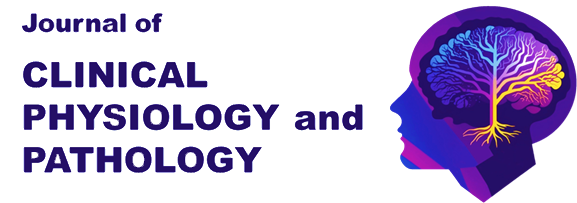Authors:
For citation:
Osipova Yu., Ostrovskaya L., Morgunova V., Ermakova O., Arinina L, Domenyuk D., Kochkonyan T., Domenyuk S. Clinical & Morphological Approach to Diagnosing Periodontium Inflammatory Diseases in Patients with Barrett’s esophagus. Journal of Clinical Physiology and Pathology (JISCPP) 2024; 3 (1): 35-41.
Abstract:
Barrett’s esophagus (BE) is a facultative precancerous ailment affecting the distal esophagus anddevelops as a complication in 10-15% of patients suffering from gastroesophageal reflux disease (GERD). BE features metaplasia development, where flat differentiated cells are replaced with cylindrical differentiated ones. Inflammatory periodontal pathologies, which – given their high prevalence – are a serious medical and socioeconomic issue faced by society nowadays, account for not tooth loss only, yet also imply a negative impact involving the internal organs, the latter being explained through developing periodontal infection foci. The connection between gastrointestinal tract diseases and the status of the oral organs has behind it metabolic,hemodynamic, immunological, and neuroregulatory issues, as well as disorders of microbiocenosis. Aim of study. This study was aimed at studying the morphological features and the immuno-histochemical profile of Barrett’s esophagus in patients with periodontium inflammatory diseases (PID).
Materials and methods. Patients aged 30-65 (n=76), both males and females, with chronic generalized periodontitis (CGP) were divided into the main group (n=37) – patients with BE, and the comparison group (n=36) – showing no general somatic pathology. The control group were patients (n=28) of similar age and gender specifics, featuring neither symptoms of periodontal disease nor signs of esophageal pathology. CGP was diagnosed based on the systematics of periodontal issues as approved at the XVI Plenary Meeting of the All- Union Society of Dentists (1983).The indicators of the diffuse neuroendocrine system and cellular renewal of periodontal, esophageal and gastric epithelial cells were identified employing immunohistochemical studies.The study relied on monoclonal mouse antibodies to NO synthase (ICN, Costa Mesa, USA, titer 1:2000); to endothelin-1 (Sigma, St. Louis, USA, titer 1:200). Polyclonal rabbit antiserum was used against melatonin (CID Research Inc., titer 1:250), whereas the morphometric analysis was performed using the VideoTest- Morphology 5.0 computer image analysis software.
Results. Diseases affecting the esophagus contribute to the progression of periodontal diseases. The analysis of the dental status of patients suffering from PID against BE points at a more significant inflammatory lesion involving the periodontal complex, if compared with patients having no esophageal pathology. The intensity of inflammatory and destructive processes affecting the periodontium in case of BE is due to the functional morphology of endocrine cells of the mucous membrane of the esophagus and gums immunepositive to melatonin, endothelin-1, NO synthase. The obtained data are in line with the respective periodontal indices(Muhlemann, PMA, PI) and may be employed as criteria for early identification of periodontal issue severity.
Conclusion. Moderate chronic generalized periodontitis against BE is associated with hyperplasia of esophageal mucosa cells immune-positive to endothelin-1, NO-synthase. Severe chronic generalized periodontitis developing against BE is associated with severe hypoplasia of cells immune-positive to melatonin, as well as with increasing hyperplasia of endocrine cells in the esophageal mucosa producing endothelium-1, NO synthase. The deficiency of melatonin-producing cells along with intense apoptosis causes deeper destructive issues in periodontal tissues. The obtained outcomes of a comprehensive clinical, morphological, immunohistochemical study contribute to expanding the understanding of BE pathomorphology, as well as to clarifying the mechanisms behind PID development in the described category of patients. Reliable diagnostic criteria for the degree of inflammatory and destructive processes affecting periodontium include quantitative analysis of gingival epithelial cells immune-positive to melatonin, endothelin-1, NO-synthase, which allows improving the quality of both treatment and diagnostic measures in patients with PID underway against BE.
Conflicts of interest. The author have no conflicts of interest to declare.
Funding. There was no funding for this study.
Keywords:
